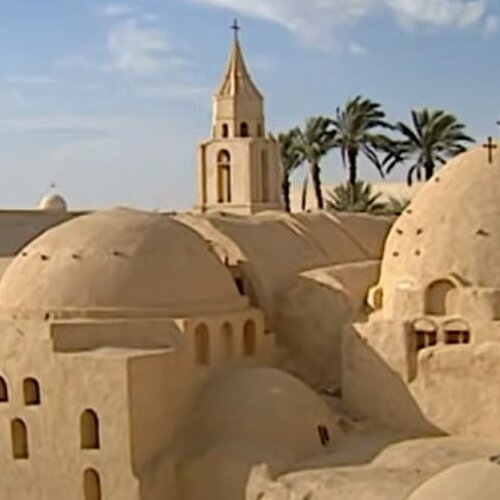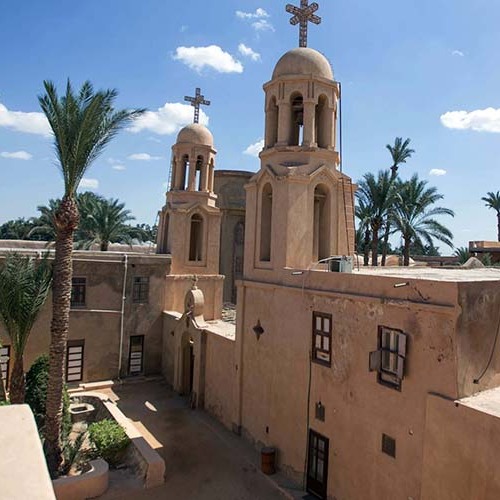No other nation in the world says ‘Welcome’ as often as the Egyptians, and every time, they mean it. While the ancient civilization of Egypt continues to amaze, contemporary Egyptians are equally remarkable.
Syrian Monastery
Syrian Monastery in Wadi El Natrun
The Syrian Monastery, a significant Coptic Orthodox monastery, is located in Wadi El Natrun, Beheira Governorate, Egypt. Known for its rich history and ecclesiastical significance, it is a key spiritual site. Here’s an overview:
Location and Naming
- Situated about 500 meters northwest of the Monastery of Saint Pishoy in Wadi El Natrun.
- Officially dedicated to the Virgin Mary, it is popularly known as the Syrian Monastery due to its historical use by Syriac monks.
Foundational History
- The monastery’s foundation dates back to the 6th century, linked to the Julian heresy era under Pope Timothy III of Alexandria.
- Originally established by Orthodox monks as a response to the Julian heresy, it was later sold to Syrian merchants and became a hub for Syrian monks.
Medieval Period
- The monastery faced several attacks but was rebuilt in the 9th century.
- Moses of Nisibis, a monk from the monastery, significantly contributed to its wealth by acquiring numerous Syriac manuscripts.
- The Door of Prophecies, a symbolic artifact in the monastery, depicts Christian faith’s past and future.
Later Developments
- In the 12th century, the monastery experienced difficulties due to the absence of Syrian priests but saw an influx of Syrian refugees in the 13th century.
- The miraculous Tree of Saint Ephrem, associated with a legend involving Saints Ephrem and Pishoy, is a notable feature.
Modern Era
- The monastery’s Syriac manuscripts spurred significant research in Syriac language and culture.
- Wall paintings from the 7th to the 13th centuries have been uncovered, restored, and conserved, showcasing the development of Coptic art.
Architectural Features
- Enclosed by a 9th-century wall, the monastery has a keep (tower) and a refectory.
- Houses five churches, dedicated to the Virgin Mary, the Forty Nine Elder Martyrs of Scetes, Saints Honnos and Marutha, and Saint John the Dwarf
Current Status
- Continues to be a place of religious and historical study, preserving important Christian and Syriac heritage.
- Attracts scholars and visitors interested in Coptic history, Christian monasticism, and art history.
- The Syria Monastery in Wadi El Natrun stands as a monument to the enduring legacy of Christian monasticism, reflecting centuries of religious, cultural, and artistic evolution. Its historical manuscripts and art make it a valuable resource for understanding early Christian and Syriac traditions.
Created On March 18, 2020
Updated On Aug , 2024
WADI AL NATRON Travel Guide



